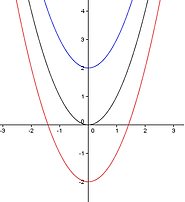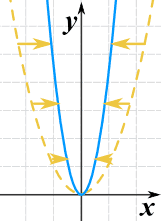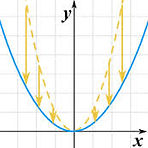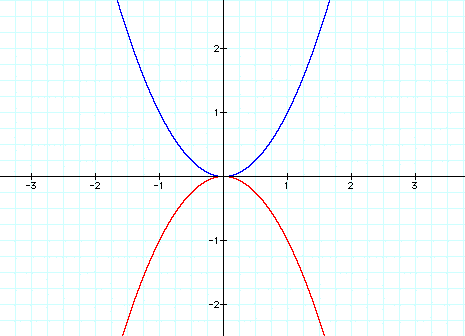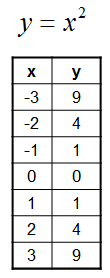Understanding Quadratics
Grade 10 Academics
Vertx Form
For more Information go to: http://www.purplemath.com/modules/solvquad.htm
Vertex Form is written as y = a(x - h)² + k
Axis of Symmetry
The axis of symmetry is a vertical line that separates the paraballa in two equal halves.
The AOS has to be written as x = h because it is the x co-ordinate in the vertex
(h+k)
Optimal Value
The optimal value is a horizontal line that tells us the highest or lowest point in the
parabola. It is usually called the maximum or the minimum value in real life situations.
Also the Optimal Value has to be written as y= k because it is the y co-ordinate in the vertex
(h+k)
NOTE: When you find the optimal value and the AOS you will acquire the Vertex
Therefore in the equation y = a(x - h)² + k the - h and the k are your vertex.
Transformations
Vertical translation occurs when the y value in the vertex or when k in the
equation y = a(x - h)² + k moves up or down (increases or decreases). Yes, this
directly relates to the optimal value.
If perhaps, "k" is -2 then the vertex would move two down from its orgin (0)
or if "k" is 2 then it would move two up from its origin (0)
Remember that this is called Vertical Translation
Horizontal translation is exactly what you thought. It is the oppisite of vertical
translation and it directly relates to the AOS. This tells you when x value in the
vertex or when - h in the equation y = a(x - h)² + k moves to the left or right.
For example, lets say that "- h" is 2 then the vertex would move two to the left
side but if it is -2 then you would move it two to the right from the origin (0).
Take note that this is called Horizontal Translation
Vertical stretch is the "a" in the equation y = a(x - h)² + k as it acts towards the
stretch or the commpression of the parabola. When "a" is greater than 1 then
the parabola seems like it is being compressed and this is true. But when the
"a" is less than 1 then the parabola is being streched out this is a vertical stretch.
Remember that a stretch in the parabola is a Vertical Strecth
Remember that a compression occurs in the parabola it's called a Vertical Compression
A reflection is an easy concept to remember. It is what the parabola looks like. If it is
opening upwards then "a" is +, on the contrary when "a" is negative, we see the
parabola open downwards. The picture on the left will provide you with a clear concept.
When "a" is negative it is called a Reflection (Vertical Reflection)
X-Intercepts or Zeroes
When finding the x-intercept we must always think of the x co-ordinate as (x,0). Thus, y is
zero in the equation y = a(x - h)² + k making it easy for us to isolate x.
An example here is: y = a(x - 4)² - 6
0 +16 = (x - 3)² -16 +16
√16 = √(x - 3)²
±4 +3 = x - 3 +3
x = 1 or x= 7 → This will be your two x-intercepts on the graph
Step Pattern
Before heading on any further we must take a look at the step patern.
In every parabola there is a step pattern in which they follow the rule: as we go
left each time we have to square the number of times we go left to get the
number of square to go up adn vice versa for the right side. The "a" value alters
this rule as it increases or decreases it. So if "a" is 2 then we have to double the
square so: 1 left and 2 up and then 2 left and 8 up. If "a" is 0.5 then it is: 1 left and
0.5 up 2 left and 2 up and vice versa on the right side.
Look at the video below if you need assistance
